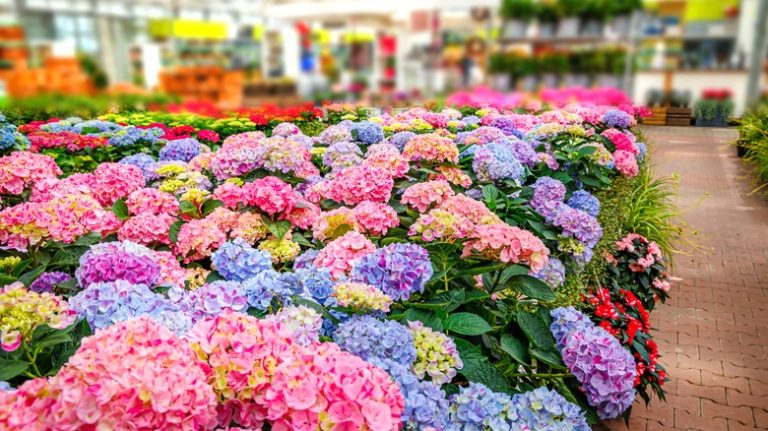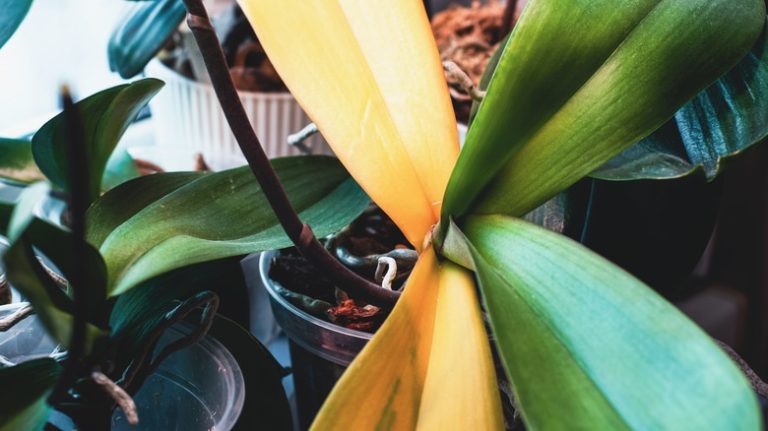Black-eyed Susans, or Rudbeckia hirta, are a popular flower in America, especially in the spring. They are a member of the daisy family and are known for their bright yellow petals with a dark brown or black center. These flowers are a common sight in gardens, meadows, and along roadsides, adding a splash of color and beauty to the landscape.
Black-eyed Susans are native to North America and can be found in a variety of soils and growing conditions. They are self-seeding, which means that they will come back year after year without any effort on your part. This makes them a perfect choice for low-maintenance gardens and natural prairie restorations.
These flowers are not only beautiful, but they also attract birds, butterflies, and other pollinators. The nectar-rich flowers provide a valuable food source for these creatures and help support the local ecosystem. In fact, Black-eyed Susans are often planted specifically to create a habitat for butterflies and other wildlife.
Black-eyed Susans are easy to grow and can be started from seed or purchased as plants. They prefer full sun but can tolerate some shade. They can be planted in spring or fall, and will usually bloom within 60-80 days. These flowers also make great cut flowers, adding a touch of elegance to any bouquet.
If you are interested in adding Black-eyed Susans to your garden, there are a few things to keep in mind. They prefer well-draining soil, so if your soil is heavy clay, you may need to loosen it up with some compost or sand. They also benefit from regular watering, especially during dry spells. Deadheading the flowers will prolong the blooming period and keep the plants looking their best.
In conclusion, Black-eyed Susans are a beautiful and versatile flower that can add a touch of color to any garden or landscape. Whether you are a seasoned gardener or just starting out, these flowers are a great choice. They are easy to grow, attract birds and butterflies, and provide a food source for our winged friends. So why not give them a try and bring a little bit of nature into your own backyard?
Black-Eyed Susan
Black-Eyed Susan is a member of the sunflower family, and it is a perfect addition to any garden. These flowers can loosen up any display with their golden centers and black heads, and they are sure to please the eye. Native to America, Black-Eyed Susans are self-seeding flowers that grow best in well-drained soils. They can be planted in the spring after the last frost and will spread on their own. These flowers are also a favorite of birds and butterflies, adding even more beauty to your garden.
Black-Eyed Susans are easy to care for and require little maintenance. They prefer full sun but can tolerate some shade. It is important to water them regularly, especially during dry spells. They can be grown in containers or directly in the ground. To plant them, dig a hole that is level with the rest of the soil and place the flower in it. Backfill the hole and water well. Black-Eyed Susans will bloom from mid-summer to early fall, creating a beautiful display of color.
If you would like to attract more Black-Eyed Susans to your garden, consider leaving some of the flowers to go to seed. This will help them spread and naturalize in your garden. Black-Eyed Susans are also great for prairie restoration projects. They can be grown alongside other native wildflowers to create a diverse and beautiful landscape.
Black-Eyed Susans are not just beautiful, they also have practical uses. In Maryland, the Black-Eyed Susan is the state flower and is used in the production of wines. The flowers contain ingredients that can be used in food and drinks. The stiff stems of the flowers can be used to create special arrangements and table displays.
For more detailed information about Black-Eyed Susans, including tips on how to grow them and care for them, please visit our website. We also have a gallery of photos for you to enjoy. If you have any questions or comments, please don’t hesitate to reach out to our customer service team. We are here to help!
Black-eyed Susans
Black-eyed Susans are native wildflowers that are commonly found in North America. These bright and cheerful flowers are a favorite among gardeners due to their easy-growing nature and beautiful display.
Black-eyed Susans, also known as Rudbeckia hirta, belong to the sunflower family. They are characterized by their yellow-golden petals and dark brown centers, which resemble the eyes of a Susan.
If you are interested in growing Black-eyed Susans in your own garden, here are some tips to help you get started:
- Plant the seeds in spring or fall, depending on your climate.
- Choose a sunny location with well-drained soil.
- Loosen the soil before planting and mix in some compost or organic matter.
- Water the plants regularly, especially during dry periods.
- Black-eyed Susans are self-seeding, so they will naturalize and come back year after year.
- In Minnesota, which is their native habitat, Black-eyed Susans can be found in prairies and meadows.
Black-eyed Susans are not only beautiful, but they also attract butterflies and other pollinators to your garden. Their long bloom period, which can last for several weeks, makes them a popular choice for landscaping.
If you would like to see Black-eyed Susans in person, you can visit botanical gardens or nurseries that specialize in native plants. These places often have Black-eyed Susans on display and can provide you with more information on how to grow and care for them.
In addition to their ornamental value, Black-eyed Susans have some practical uses as well. Their leaves can be used as a green dye, and their roots have medicinal properties.
In summary, Black-eyed Susans are beautiful and versatile flowers that are easy to grow and maintain. Whether you plant them in your own garden or admire them in a natural setting, they are sure to bring joy and color to your surroundings.
How to Plant, Grow, and Care for Black-eyed Susan Flowers
Gardening enthusiasts in Minnesota have a special place in their hearts for black-eyed Susans. These beautiful flowers, with their yellow petals and dark brown centers, are a staple in many gardens and provide a vibrant addition to any outdoor space.
If you are wondering how to plant, grow, and care for black-eyed Susan flowers, we have all the information you need. Read on to learn more about these stunning plants and how to ensure they thrive in your garden.
Planting Black-eyed Susans
Black-eyed Susans are part of the sunflower family and can be easily planted in a sunny location with well-draining soil. Start by preparing a hole in the ground, loosening the soil and adding any necessary amendments.
You can also grow black-eyed Susans from seeds. Plant the seeds in the spring, after the danger of frost has passed, and make sure to water them regularly until they are established.
Growing Black-eyed Susans
Black-eyed Susans are known for their tolerance to a variety of conditions, making them a versatile and easy-to-grow flower. They can thrive in a wide range of soil types and are also drought-tolerant once established.
To encourage the growth of more flowers, deadhead the spent blooms regularly. This will also prevent the plant from self-seeding and spreading too aggressively.
Caring for Black-eyed Susans
Black-eyed Susans require minimal care once they are established. They are resistant to most pests and diseases and are loved by butterflies and birds, making them a great addition to any garden.
However, if you notice any signs of disease or pest infestation, it is important to take immediate action. Remove any affected plants and treat the surrounding area with appropriate pest control or fungicides, if necessary.
Restoration Services and More
In addition to being a popular choice for home gardens, black-eyed Susans are also used in restoration projects across America. Their ability to tolerate harsh conditions and adapt to different soil types makes them a valuable asset in prairie restoration efforts.
If you are looking for black-eyed Susans or other native plants, visit local nurseries or gardening centers in your area. They can provide you with detailed information about the best planting and care practices for black-eyed Susans.
In summary, black-eyed Susans are a stunning addition to any garden. They are easy to grow, require minimal care, and attract beautiful butterflies and birds. Whether you are a seasoned gardener or a beginner, black-eyed Susans are the perfect choice for adding color and vibrancy to your outdoor space.
Sign up for daily gardening advice and tips
If you want to learn more about how to care for black-eyed Susans, including information on when they bloom and how to plant them in your garden, sign up for our daily gardening advice and tips. Our experts will provide you with detailed information on how to grow and maintain these beautiful flowers.
We will also provide you with photos of black-eyed Susans in bloom, so you can see what they look like and get ideas for landscaping your own garden. In addition, we’ll give you tips on how to attract birds and butterflies to your garden by planting native flowers like black-eyed Susans.
If you’re interested in self-seeding flowers, we’ll provide you with information on how to encourage black-eyed Susans to self-seed, so you can have more flowers year after year. We’ll also let you know which nurseries and seed centers sell black-eyed Susan seeds, in case you want to plant them yourself.
Our daily gardening advice and tips will cover a variety of topics, including how to accommodate black-eyed Susans in smaller gardens, what other flowers and plants they pair well with, and what their care requirements are. You’ll also learn about the different varieties of black-eyed Susans, such as the black-eyed Susan “Monticola”, which has stiff, hairy leaves and blooms later in the spring.
For those who are interested in using black-eyed Susans for prairie restoration or natural landscaping, we’ll provide solutions on how to incorporate them into your plans. We’ll also give you tips on how to use black-eyed Susans in table arrangements and dining centerpieces, as their vibrant blooms make them a perfect addition to any occasion.
Please note that our daily gardening advice and tips are sponsored by UF/IFAS and other organizations. You can sign up to receive daily emails with the latest information and updates. If you have any questions or comments, please feel free to reach out to us. We value your feedback and will do our best to help you with your gardening needs.




